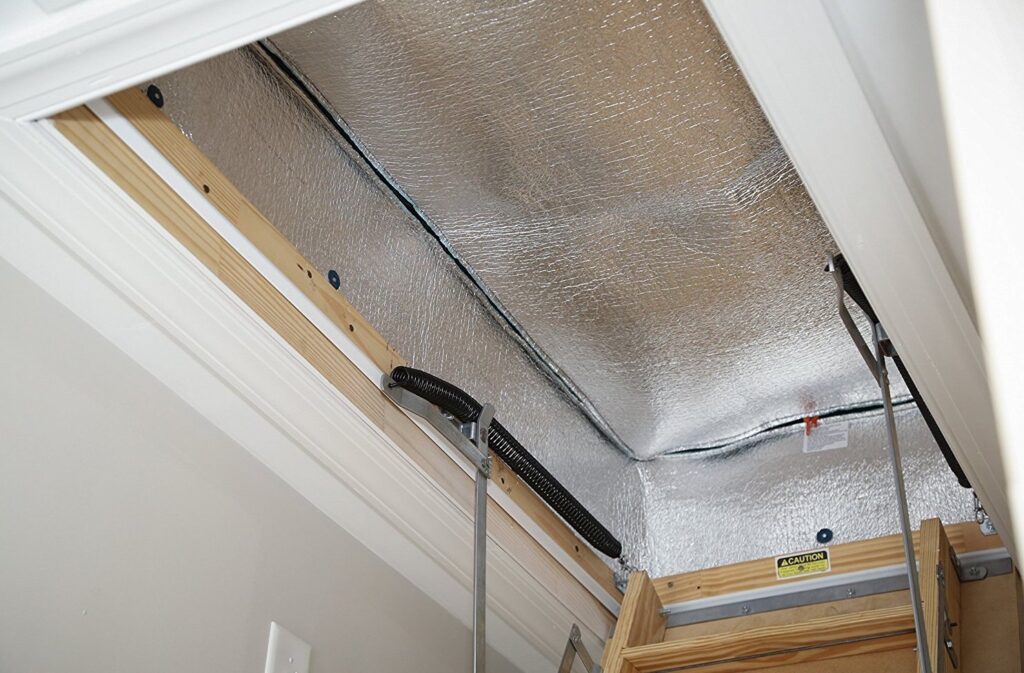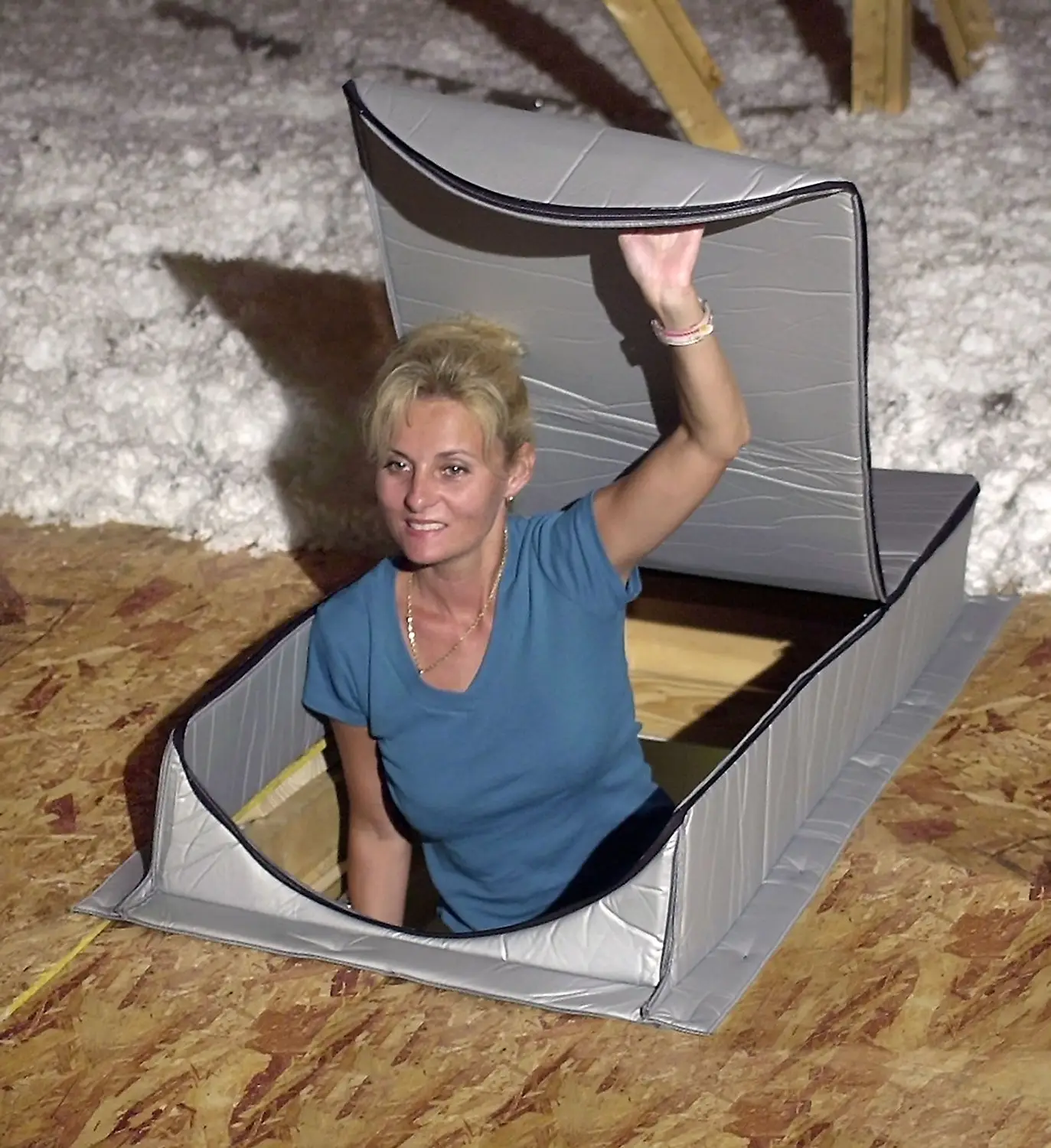One of the largest sources of discomfort and inefficiency in Craighead Electric Cooperative members’ homes is consistently found in the attic access, especially pull-down stairs. They are convenient for gaining entry to your attic space for storage and maintenance but are rarely air sealed and insulated as well as they could be.
Outdoor attic accesses, like in a garage or carport, are immune to this problem. But pull-down stairs installed inside in a hallway or laundry room, for example, amount to exterior doors with no weatherstripping or insulation. You wouldn’t install a lowly, half-inch piece of plywood as your front door, would you? Of course not! It would be so uncomfortable! So why do we leave our attic access in such a state? Here are some ideas to make your attic hatch less drafty and your home more comfortable.
The goal is to keep hot, humid outside air out in the summer and warm, toasty indoor air in in the winter. The most straightforward way would be to add some weatherstripping around the perimeter of your attic hatch, so it creates a seal.
Weatherstripping comes in many different forms, from simple adhesive-backed foam ribbons to screw-on strips. Choose the kind that will work best for your situation.
Weatherstripping helps cut down on air drafts, but what about insulation? Without it, you would still feel the heat from the attic beaming down in the summer and a chill in the winter when standing under your attic access. A simple piece of foam board, ideally one with a shiny, foil radiant barrier on one or both sides, laid over the attic opening before closing the hatch works well. To make room for the folded-up stairs, some enterprising members have fashioned insulated boxes out of foam board to lay over the top of their attic opening.

A third option that takes care of both the air sealing and insulation issues at the same time is a product called attic access covers. They are insulated and air-sealed covers that feature a built-in zippered access flap that resists air flow. Sometimes referred to as “attic tents” due to their resemblance to the zippered flap of a camping tent, attic access covers are fastened directly to the attic floor decking and sealed with caulk or foam to help keep your “bought air” exactly where you mean for it to be. They range from cheap foil to premium canvas construction to fit any budget, are available in all sizes, and are easy enough to install that any moderately handy homeowners could do it themselves.
If you have questions about energy efficiency or home comfort, reach out to your energy experts at Craighead Electric Cooperative.




